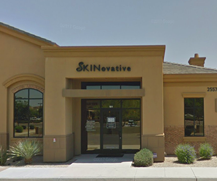Laser ablation and radiofrequency ablation are new methods to treat varicose and spider veins. They are minimally invasive procedures (require no open surgery) and both use heat to shrink and shut off the varicose vein or the underlying abnormal deep vein that is causing the varicosity. What is laser ablation? Endovenous laser ablation (EVLT) uses a laser fiber that is inserted through the skin and directly into the varicose vein. Guided by ultrasound, the lining inside the faulty vein is slowly heated with focused light from a needle-thin catheter (flexible tube). This destroys the vein walls, causing the vein to…
Read MoreFor the treatment of life-threatening deep vein
The combination of leg compression and medication is more effective in preventing deep vein thrombosis (blood clots in deep veins) and pulmonary embolism (blood clots traveling to the lungs) in high-risk individuals than using either one of these treatments alone. This finding is based on data from 11 trials involving 7,431 patients. Deep vein thrombosis and pulmonary embolism Deep vein thrombosis (DVT) occurs when sitting still for long periods of time in cramped conditions, such as long car rides or plane trips. DVT also commonly develops during prolonged immobility, such as when undergoing surgery, bed rest or hospitalization. Most deep…
Read MoreNonsurgical treatment highly effective for pain
What are varicoceles? A varicocele is a varicose vein of the testicle and scrotum. Varicoceles can cause pain, testicular atrophy (shrinkage) or fertility problems. Veins contain one-way valves that allow blood to flow from the testicles and scrotum back to the heart. Just like varicose veins in the leg, when the veins of the scrotum are damaged or blocked, the blood pools and enlarges the veins, causing varicoceles. Roughly 10 percent of men have varicoceles, and every year as many as 70,000 to 80,000 men in America undergo surgical treatment for varicocele. They are more common in men aged 15…
Read MoreVaricose Veins FAQs
What are the symptoms of varicose veins? Some people with benign varicosities do not experience discomfort, but those with long-standing varicose veins experience the following symptoms: · Throbbing or aching pain and heaviness in the legs · Visibly enlarged blue or purplish veins · Mild swelling of ankles · Muscle cramping · Itching around the veins · Skin discoloration at the ankles · Skin ulcers near the ankle in severe cases What causes varicose veins? Varicose veins are swollen veins that bulge to the skin’s surface. They sometimes become tortuous or twisted. They occur due to weak valves in the…
Read MoreVaricose veins are swollen veins; spider veins are swollen capillaries
What are spider veins? Spider veins, also called telangiectasias, are superficial tiny blood vessels that appear as thin lines or thread-like networks of red, purple or blue in the skin. They may look like short, unconnected lines or branch out like a spider web. Spider veins are the smaller, milder version of varicose veins. These dilated capillaries (blood vessels that connect small arteries and veins) are common on the back and sides of the thighs, legs and feet. They are easily recognizable in fair-skinned people and can be found in the face. Fine varicosities are more common in females. Do…
Read MoreHemorrhoids are varicose veins
Do you notice specks of bright red blood during bowel movement? You probably have varicose veins in the anus. What are hemorrhoids? Hemorrhoids, also called “piles,” are swollen veins around the anus or in the rectum. They are either under the skin around the anus (external hemorrhoid) or inside the rectum (internal hemorrhoid). External hemorrhoids may cause pain when irritated. Internal hemorrhoids are usually painless but tend to bleed. Causes Veins in the anus get inflamed because of frequent straining during bowel movement. Passing stool can irritate the delicate surface of already formed hemorrhoids. That’s why they bleed (painless bleeding)….
Read More
